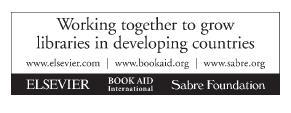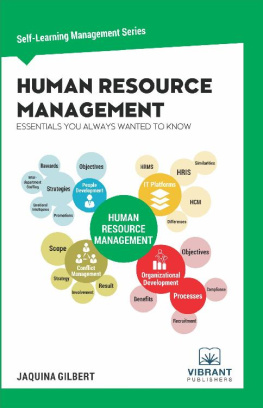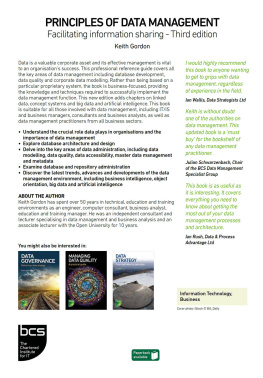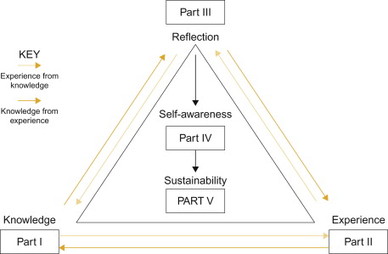Principles of Management for the Hospitality Industry
Dana Tesone
Rosen College of Hospitality Management, University of Central Florida
Butterworth-Heinemann
Copyright
Butterworth-Heinemann is an imprint of Elsevier
Linacre House, Jordan Hill, Oxford OX2 8DP, UK
30 Corporate Drive, Suite 400, Burlington, MA 01803, USA
First edition 2010
No part of this publication may be reproduced, stored in a retrieval system or transmitted in any form or by any means electronic, mechanical, photocopying, recording or otherwise without the prior written permission of the publisher
Permissions may be sought directly from Elseviers Science & Technology Rights Department in Oxford, UK: phone (+44) (0) 1865 843830; fax (+44) (0) 1865 853333; email: , and selecting Obtaining permission to use Elsevier material
Notice
No responsibility is assumed by the publisher for any injury and/or damage to persons or property as a matter of products liability, negligence or otherwise, or from any use or operation of any methods, products, instructions or ideas contained in the material herein.
British Library Cataloguing in Publication Data
A catalogue record for this book is available from the British Library
Library of Congress Cataloging-in-Publication Data
A catalog record for this book is available from the Library of Congress
ISBN: 978-1-85617-799-3
For information on all Butterworth-Heinemann publications visit our website at www.books.elsevier.com
Printed and bound in Great Britain
10 11 12 10 9 8 7 6 5 4 3 2 1

Preface
This book is designed to provide the readers with the planning, organizing, influencing, and control functions associated with management in service enterprises, especially with hospitality organizations. It is presented from the standpoint of a practitioners perspective, which means it is applicable to the actual tasks, duties and responsibilities that are performed by line and staff managers alike. The book may be used for educational programs in any service industry, but is particularly focused on managing hospitality organizations. The information that is presented includes all of the activities performed by management practitioners.
The objective of the manager in the hospitality service industries is to learn the practice of professional management. This practice includes building a solid foundation of management and leadership knowledge, the development of appropriate skills, and the reflection and self-awareness of personal attitudes about management and leadership. The operating manager who is in possession of this knowledge and these skills will benefit in three ways. First, the operating manager who has a thorough knowledge of professional management and leadership concepts has a foundation on which to develop his or her skills. Second, this combination of knowledge and skills better prepares the operations manager to successfully run, grow and fix any operation within any enterprise. Third, the operations manager who possesses this knowledge and these skills, and who regularly contemplates how his or her actions and behaviors reveal his or her attitudes about management and leadership is more likely to enjoy a rapidly progressive career. In essence, this person will be a better manager for any organization.
This book is written in a straightforward and condensed manner designed to provide the reader with an inclusive, yet precise presentation of the material. The intention is to virtually place the reader in the imaginary workplace to work through items of discussion in each chapter. At the beginning of each chapter, a vignette entitled IN THE REAL WORLD sets the stage for the reader to embark on a given topic. The chapter then concludes with the outcome of the applied role-play with the vignette called IN THE REAL WORLD(Continued), to provide reinforcement of the material absorbed through reading the chapter.
A section called Discussion Questions appears after each vignette to provide thoughtful consideration of the topics presented in each chapter. The questions are arranged in variable formats ranging from open-ended to specific right and wrong answers. Marginal Definitions are included throughout each chapter to reinforce the vocabulary of terms associated with professional management practices. A Glossary of Terms provides an alphabetical listing of vocabulary and definitions.
The book consists of seventeen chapters, arranged within five parts. The figure below shows a diagram of the relationships and rationale for the book.
The chapters in Part I of the book focus on the evolution of management and general descriptions of management functions, strategies and activities.
addresses service enterprise systems, development and structures for the purpose of establishing a foundation through which managers may view the operations within service enterprises.
At this point in the book, we have established a foundation of management knowledge that will be applied throughout the remainder of the text. The reader is now prepared to enter Part II of the book.
Part II contains chapters that present the reader with a snapshot of duties and responsibilities associated with the practice of professional management. There is a thorough discussion of productivity models and the practice of value-added management in addresses management accounting and financial control functions within service enterprises. At this stage we have absorbed a combination of knowledge and practices that will prepare us to experience management diagnostics and interventions used to perform tactical strategies.
Part III demonstrates applied strategies and tactics required for effective strategic management. In these chapters, we will reflect on our existing foundations of knowledge and practice to enact management interventions in three major categories. provides the reader with practices used to turnaround under performing departments within a service enterprise. At this point, we have accumulated and reflected upon a holistic blend of management knowledge, practices and experiences. We are now ready to enter an examination of ourselves for the purpose of learning how managers may become leaders.
Part IV covers the theories, practices and development aspects of leadership in organizations.. Part V presents information concerning sustainable competitive advantage from both marketing and human resource management perspectives. As we near the completion of the final chapter, we reflect upon all we learn by reframing a summary of major knowledge and experiences presented throughout the text.
It is recommended that readers reflect on actual scenarios in the workplace or classroom role-play while digesting the content of this book. If the book is being used as part of a college course, the facilitator may encourage discussions of actual events to bring each topic to life. The reader is encouraged to convert the knowledge from this book into actual skills to be applied in the workplace. This may be accomplished through two activities. First, apply the knowledge immediately. Turning knowledge into skills requires practice. Practice the knowledge within 24 to 48 hours after reading it. Second, teach these concepts to someone else. We learn through teaching. As one presents this new information to another person, the exchange process will reinforce the knowledge and that teacher will be better prepared to use the knowledge in the workplace. Like the first suggestion, this technique should be applied within 24 to 48 hours after reading and discussing the information.















